Thu, 07/09/2015 - 18:14
#1
Meccano Company of America.
This is probably not the right place to post this but as I still can not understand the logic of this site, I place it here. It will be possible to move it to the proper place when this will be found.
I have been able to save a few of the posts from the old site about Meccano Inc and here they are. I can not access the pictures and if you send them to me with the instructions on how to insert pictures on this site (having too little time to spare, I have given up searching how to do this) I will place them where they should be on this post.
P.S. There is a lot of rubbish at the top of this box but no caracters size and the horizontal line does not show in the preview so I have to type one.
P.P.S. Left, center, right and justify should apply to the selection only and not to all the post. Is n't that how it should be.
P..P.P.S. What about a special temporary thread on the home page so that we can list all that does not work ?
______________________________________________________________________________________________________
Meccano is a metal construction toy, using perforated metal shapes, nuts and bolts to assemble all sorts of things. Erector is a similar system which is much better known in the United States. Meccano was patented by Frank Hornby in England in 1901, and spread through the world. It was exported to the States by 1909 by the Embossing Company of Albany N.Y. until 1912, and a US Meccano Company was formed in 1913. Erector was invented in the US by Albert Carlton Gilbert in 1912. Legal procedings in America over Meccano patents are instigated by Frank Hornby in 1917, and litigation is won, resulting in injunctions of similar toys. A factory to manufacture Meccano sets was established in Elisabeth, New Jersey in 1920 and operated until 1928. There was also an office in New-York which closed the same year due to the Depression.
The US Meccano Company owned by Joshua Lionel Cowan (of Lionel trains) was acquired by A.C. Gilbert in 1928. They made products bearing the Meccano name for sale only in the United States. The Meccano factory was closed in 1928, and production moved to the Erector factory in New-Haven Connecticut. Meccano sets continued in production for a few years, and the name was used on a number of other toys. Meccano construction sets were made in the US as late as 1938. Gilbert was also selling toys in England. In 1929, Henry Hudson Dobson becomes the importer for the Meccano products in the U.S.A.
Gilbert retired in 1954 and turned the business over to his son A. C. Junior. The company was struggling as the space race was on and the company was slow to bring out new products. Upon his death in 1961, the company was bought by the Jack Wrather Group. Erector was still a major product in the toy line, but the parts were changed and the company went bankrupt in 1967.
From 1929 and until 1960, the distribution of the Meccano products is done by Henry Hudson Dobson Inc, P.O. Box 255, Kenilworth N.J. H.Hudson Dobson (1891 - 1975) was British, trade director of Meccano Ltd., he had been sent to the U.S. to increase the sales.
In the April 1973 issue of the Meccano Magazine AVA international publishes that it has been apointed sole agent for all Meccano Ltd. products in the U.S.A. This contract last until Meccano was wound up in November 1979.
The Erector portion of the business was sold to Gabriel Industries. Gabriel continued to sell Erector sets under the Gilbert name until 1976 when the name Gilbert disappers and the trade mark becomes "Gabriel Erector" . In 1978 the Gabriel Company was taken over by the Columbia Broadcasting Corporation and the sets are sold as "Gabriel CBS Toys".
By 1982 the Gabriel Division name was no longer used and the name on the boxes was "CBS Toys" with the Ideal logo. In 1984 CBS sold the Ideal Company and Erector to GAF View-Master. Copyrights were held under the name View-Master Ideal Group Inc.
In 1989, Meccano s.a. of Calais France bought the rights to the Erector trademark in the United States and started selling Meccano-Erector sets in the american market, they still do in 2015.
© The Dinky Toys Encyclopaedia ™ 2015.
-- o -- O -- o --
As a new DTCA member (but Dinky collector for about 55 years) I am pleased with the quality of the discussion on this forum. I am however bound to say that the information above about U.S. distribution is incomplete and in some respects inaccurate. I hasten to add that Jacques can hardly be blamed for this as no one knows the whole story and few know even part of it.
Most collectors probably do not care about this issue in any case. (One of my fellow Californians who did and researched it in the past is Dinky collector/scholar Keith Harvie, whose "Dinky Toys Gazette" was sadly short-lived.) But Meccano Ltd.'s ever-variable distribution in the States had a big effect on those of us who lived through it. In my case, it made Dinky collecting a tantalizing, romantic quest -- and thus paradoxically added to the models' appeal compared to their readily available competitors such as Corgi and Matchbox.
Fortunately, we Dinky Toys collectors do not need to worry about the early history of Meccano building sets in the U.S., some of which remains confused by patent claims and counter-claims as well as the passage of time. But it needs to be said that before 1938, distribution of Dinky was not yet by H. Hudson Dobson, but rather by "The Meccano Company of America." Prewar boxes often bear "Meccano Company of America" stickers, with the same black-on-orange colours as their postwar Dobson equivalents.
In 1938, the distributor's name changed to H. Hudson Dobson. The year is documented via a 1938 catalogue (I scanned this image from the "Dinky Toys Gazette") that was rubber-stamped with the Dobson name, with the headquarters being at the same address as before. (The company moved to New Jersey after the war.
Jacques is correct to suggest that Mr. Dobson had been a Meccano employee. The reason for the name change is unknown to me; perhaps it represents Dobson's taking an increased financial stake in the distributorship, or perhaps it was done to help the firm take on distribution of other companies' toys. (After the war, H. Hudson Dobson did briefly distribute Frog models and SAE diecast figures.)
Elsewhere on this forum (www.dtcawebsite.org/dinky-forum/2-dtca-forum/570-h-hudson-dobson-corresp..., for those who have not already seen them) are copies of communications received from H. Hudson Dobson by several collectors in the 1950s. The similarity of the letterhead to Meccano's own, and the "Meccano" cable address that was given for the New York office, suggests that H. Hudson Dobson was still part of Meccano Ltd. -- or at least very well integrated with its operations.
Whatever the case, the distributor did its utmost to contribute to the great postwar export push. As all readers will be aware, various prewar models were reissued especially for the U.S. market, others were recoloured for the U.S., and most important Dinky Toys were freely available in U.S. toy stores.
While Dinky never quite became the household name that it was in England, it dominated the market -- especially pre-Matchbox and pre-Corgi. Dinky Toys were advertised in national publications such as Life and Boys Life (the latter a magazine received by U.S. Boy Scouts). And I have attached a screen capture I made from the introduction to "Gumby," a popular children's programme from the 1950s: this was not an early example of "product placement," but simply a reflection of what toy cars the producers readily found in a local shop.
In 1959, however, things went wrong, with the closing down of H. Hudson Dobson. Why this happened I don't know (readers?), but it likely relates at least in part to increasing financial problems at Meccano Ltd. itself, and consequent unwillingness to invest in the U.S. market so heavily.
After this point, Meccano provided Dinky Toys to a variety of different, regional distributors in the States. Some of these may have done an adequate job, but not so in all areas. I distinctly remember when, as an already committed Dinky collector at the age of five, I was told by my local toy shop in Northern California that they just could no longer get Dinky Toys.
It was during this bleak time that Dinky Toys were "closed out" by many shops, since they could no longer get supplies. (I had one birthday party where each guest received an unboxed Dinky -- these were the final stocks that one shop had sold my mother out of their display case.) And while Dinky Toys were never intended to be sold for less than list price, shops did slash prices to clear out their leftovers; this explains why collectors today find models from this period whose boxes are marked with dollar amounts lower than the official price.
Eventually, in 1963, Meccano Ltd. contracted with A.C. Gilbert to distribute Dinky Toys in the U.S. (Gilbert did not distribute Meccano, however, for obvious reasons.) Display cases bearing the Gilbert logo and Dinky name were created, and a pared-down range appeared primarily in department stores such as Sears, Roebuck, Inc. (from where a kindly uncle purchased a tractor-trailer McLean for me that year).
But, just like Meccano Ltd. itself, A.C. Gilbert was financially troubled, so the arrangement did not last long. After Lines Brothers purchased Meccano Ltd. in 1964, it took over U.S. distribution. Relics of this time include special four-page U.S. catalogue leaflets, new-style store displays, and the hated (by me, at least) "Visi-pac" boxes (first in gold and then in yellow).
Because of what appears to have been a reduced sales force, Lines Brothers no longer did a good job of selling models to independent toy and hobby shops, unlike H. Hudson Dobson. Instead, it preferred to deal mostly with large department stores such as Macy's, Marshall Fields, J.C. Penney, and Frederick and Nelson. That may have been fine if you lived near one of these establishments, but even then frustration could ensue. (I grew up bicycling distance from a Macy's at Stanford, Calif. that never had any Dinkies, whereas another Macy's in San Mateo had them but was frustratingly out of reach 13 miles away.)
Meanwhile there was a parallel distribution effort for Mini-Dinky and the "big six" American cars produced in Hong Kong. Some shops had these models but no other Dinky Toys. (Of course, these products would presumably have come directly to the U.S. without ever passing through Liverpool.)
Dwindling availability and the Visi-pacs made the phrase "Lines Brothers" an epithet to me and my best friend, another avid Dinky enthusiast. Less and less effort was made to sell Dinky Toys in the U.S.A., and (as Keith Harvie has documented) the 1966 Dinky catalogue was the last to be printed in a specific U.S. edition until 1973.
During this period, Lines Brothers did succeed in selling six different Dinky Toys -- likely in quantities of 10,000 apiece -- to Post Cereals. Tantalizing an otherwise Dinky-starved public, the models were made available for $1.00 each, provided mothers could be persuaded to purchase two boxes of sugar-laden cereal. (This is how I obtained the Saab 96 I still have today.)
For us in Northern California during these horrible years, acquiring new Dinky Toys required a pilgrimage to the San Francisco branch of F.A.O. Schwarz (a chain that, I suspect, purchased the limited range it offered directly from Meccano Ltd.), a trip to Canada, or a visit to the U.K.
By 1971, when Lines Brothers collapsed, imports of Dinky Toys to the U.S. were at a level it would be charitable to call a "trickle." My friend and I were able to obtain new models only by post, through the good offices of George Grant ("Memorable Things"), a dealer in Maryland who obtained his stocks directly from Liverpool and Bobigny.
After the 1972 acquisition of Meccano Ltd. by Airfix, however, a Californian firm called Covell Management took the opportunity to begin importing both Meccano building sets and Dinky Toys to the U.S.A. once again. While big department stores no longer had toy sections, and the mass market was being catered to by chains such as Toys 'r' Us, there remained "boutique" toy and hobby shops that wished to set themselves apart with distinctive product offerings.
Covell sales representatives did a diligent job of finding such shops, providing their customers not only with models but with store displays like the one above, all imported from England. The business grew to the point that it attracted Texas-based AVA International, which bought out Covell and expanded its efforts still further. (Toward the end, AVA attracted investment from Airfix Ltd. and became known as US Airfix -- no connection to today's Airfix USA.)
AVA supplied shops with massive display cases like the one pictured: Made of chipboard and requiring two people to move them around, these were capable of showcasing the entire Dinky range and storing stocks in a locked compartment beneath. Regarding the latter, it's worth noting that U.S. retailers considered the plinth-style Dinky boxes with lift-off lids to be a waste of space: When the #208 VW-Porsche 914 and #251 U.S. Police Car were reissued for the American market, they were pointedly equipped with standard card boxes printed in the U.S.A.
Finally, readers will of course be aware of the "Made in U.S.A." Dinky Toys: the #275 Brinks Truck, the #803 Pocket USS Enterprise, and the #804 Pocket Klingon Cruiser. Raw castings of the Pocket models were shipped from Liverpool to Texas, and painted and packaged there. The Brinks Truck was also packaged in the U.S.A., but was probably painted and assembled at Binns Road (does anyone know for sure?).
In conclusion, the 1970s distribution of Dinky Toys in the U.S.A. was welcome, but only a pale echo of the marque's 1950s heyday. Thus and sadly, if you find a Yank who has even heard of Dinky or had any of the toys as a child, he or she is likely to be over 60.
© 2015, Jonathan Angel, except for Post Alpha-Bits image, YouTube video, and Keith Harvie catalogue scan.
-- o -- O -- o --
I forgot to point out that thanks to the H. Hudson Dobson correspondence Jan Werner posted in a different site, we see that the distributor was still operating in early 1960. So H. Hudson Dobson closed down that year instead of 1959 as we had thought.
johnnyangel
-- o -- O -- o --
I agree that Henry Hudson Dobson would have retired in 1959, if not before. According to records on the Ancestry.com website (http://search.ancestry.com/cgi-bin/sse.dll?gl=ROOT_CATEGORY&rank=1&new=1...), he was born in 1891 (and lived until 1975!).
There may be other useful information on that site, but it is behind a paywall. I did find this microscopic but suitably dashing picture of Mr. Dobson, as well as the reminiscence someone has posted: "He worked for the company that made Dinky Trucks and drove a fancy Jaguar car." Quite the character, perhaps !
johnnyangel
I forgot to point out that thanks to the H. Hudson Dobson correspondence Jan Werner posted in a different site, we see that the distributor was still operating in early 1960. So H. Hudson Dobson closed down that year instead of 1959 as we had thought.
johnnyangel
-- o -- O -- o --
I agree that Henry Hudson Dobson would have retired in 1959, if not before. According to records on the Ancestry.com website (http://search.ancestry.com/cgi-bin/sse.dll?gl=ROOT_CATEGORY&rank=1&new=1...), he was born in 1891 (and lived until 1975!).
There may be other useful information on that site, but it is behind a paywall. I did find this microscopic but suitably dashing picture of Mr. Dobson, as well as the reminiscence someone has posted: "He worked for the company that made Dinky Trucks and drove a fancy Jaguar car." Quite the character, perhaps !
johnnyangel
-- o -- O -- o --
Jacques,
Glad you saw the information!
Unfortunately it will be a while (as in several months) before I could do more in terms of merging our stories, because I have just purchased a new home and will be involved in packing up every last Dinky Toy, finding someone to carefully move the massive AVA display case, and so much else (I unfortunately also collect vinyl records, compact discs, and other impedimentia, so we will see whether or not I survive this relocation). But, I will not forget about it, and of course that's one nice thing about studying history of any sort -- you know it will be there when you get back.
What would be really great is if another knowledgeable user could tell us why H. Hudson Dobson was shut down in 1959. As I have written, this had a major impact on a generation of would-be Dinky collectors in the U.S., and it certainly did not help Meccano Ltd.'s fortunes.
Jonathan
-- o -- O -- o --
And, another bit of Dobson memorabilia that was apparently auctioned by Vectis in 2008 (does a DTCA member have it now?). I did my best to clean up the online copy, which is legible if you squint.
What is notable here is Henry Dobson personally and kindly answering a letter from a young collector, as well as very much identifying his company with Meccano Ltd. itself: "That is a fine list of cars and trucks that you suggest to us for manufacture and we should like to be able to tackle it."
johnnyangel
-- o -- O -- o --
Johnny and others--
Sorry I have not replied earlier to this interesting post, but was too busy til now. I spent most of last evening also searching for more info on HHD, and since I subscribe to Ancestry.com, I was able to find quite a bit. As has been said, he was born April 9, 1891, in Lancashire, England and died in Sept. 1975 in Elizabeth, New Jersey. Later in life, he always listed his birthplace as Liverpool. His wife was named Helen, and she was from the U.S., and they apparently met and married in the states. He had three children: Henry Hudson Dobson Jr., born in 1922, Marion Barbara Dobson, born in 1923, and James Dobson, born in 1935.
I started corresponding with the HHD company in May, 1958, as a 13 year old eager Dinky collector, eager to find easier ways to buy Dinky's. I have kept 8 letters that I received from them, the last one dated in May, 1960. I also received and kept many separate lists and post cards sent to me as well as the invoices for purchases. All of my correspondence from them was signed by I. Carney, Service Department. I recently examined the top of the letterhead and notice that the last one, in May 1960 is different. Besides listing Meccano Ltd., it also lists two new entities: Plywood Jigsaw Puzzles and S & S Marquetry. Were these two business added to the HHD portfolio because things were coming to an end with Meccano? Interesting to ponder.......
I also agree with the notion that by 1960, Henry was already 69 years old, and in that day, that was older, and he was likely to retire. The only counter to him winding down the company would be if his children were involved and would he want it to continue for them. HHD Jr. apparently was not, as he moved away from New Jersey. A 1959 city directory does show son James employed as a salesman........by that time, I would have thought him to be better placed there.
In 1926, he and Helen traveled to England, and on the ships manifest his occupation is listed as "mechanical cars". But then the 1930 Census shows him and his family, and for occupation it lists "President, Pottery Works"! What is that about? Is his work with Meccano only a part time venture? The 1940 census lists him as an "Agent for toy manufacturer".
A 1929 Directory for New York shows he and family living in Tonawanda, Niagra, New York and lists him as "Gen. Manager, Fleuron Co."
On Ancestry, there are several Directory listings for different years, and they usually list the occupation, etc. Several of these say he was a "manufacture agent in NY" & toy importer...this implies to me, that he apparently kept a separate business dealing in New York, possibly that Fleuron company connection. His World War II Draft Registration card says, for employment "in business for self" (1942).
In 1956, he and Helen traveled to England, no doubt to visit Meccano, and on that manifest he is listed as an "importer". The last directory listing I could find for him was in 1974, one year before he died. By then, Helen had pre-deceased him, and it showed him living alone in an apartment.
All of this is intriguing, and it paints a somewhat confusing picture. Did HHD have any ownership in Meccano Ltd, and did Meccano Ltd have any ownership in HHD, or was he simply there long term, loyal agent in America? I tend to think the later. I think that HHD was set up by him to represent Meccano in the states, and I think that Meccano paid him an annual sum to do that. If Meccano owned HHD, then he would not be able to add those other interests like he did in 1960.
So, by 1960, HHD was an old man, apparently without an heir apparent, and likely some of the handwriting for Meccano and Dinky was already on the wall; changes were coming, and it could have been a mutual decision to shut down HHD, as far as Dinky was concerned. It would be interesting to know if the company carried on for some time after the split with Meccano....I would guess no....Henry was ready to retire.............
Jose Haraud and I have been corresponding and he has quite a collection of US catalogs, and I asked him to try and pinpoint just when HHD disappeared from being listed, and also when A.C. Gilbert first appeared.
Regards,
Terry
-- o -- O -- o --
To all--
Here is a copy of that last letter that I received from HHD, dated May 23, 1960...........
Terry
-- o -- O -- o --
Terry,
I knew from your contributions elsewhere on the forum that when you were able to weigh in here, it would be extremely valuable!!
I only hope you were able to send H.H.D. the ten cents owed and that it is not weighing heavily on your conscience to this day :)
Remembering that H.H.D. was known as the "Meccano Company of America" pre-war, at the same address as H.H.D. was later, I am among those who believe that Mr. Dobson was originally a Meccano employee, and that Meccano Ltd. retained a substantial share (at least) in the company post-war, but I guess we shall never know the truth, nor why the company shut down.
(Ironically I once heard from a fellow collector that Henry Hudson Dobson Jr., the son, *did* also go into the toy distribution business and wound up in Texas [no connection to AVA]. But I cannot locate any documentation to this effect, so it's only hearsay.)
What is indisputable is that H.H.D. did an excellent job of promulgating Dinky Toys throughout the U.S. -- for you lucky older collectors who were able to be on the scene -- but then it all went pear-shaped, as the British say, during 1960.
I will never forget being, as a fanatically interested five-year-old, being handed the 1961 Dinky Toy catalogue by staff of the Palo Alto Sport and Toy World (a shop which amazingly, still exists under family ownership), but being told that they could no longer get new models because the distributor had shut down. It was suggested to my mother that she write Meccano Ltd. directly or contact a company called Keystone Brothers that was supposed to be the local jobber (if she ever pursued either, it didn't do any good).
The dates of the A.C. Gilbert arrangement are well-known: just from 1963 until 1964, at which point Lines Brothers took over. One 1963 catalogue was published by Gilbert, showing a limited Dinky range along with chemistry sets and other products they distributed. I have a copy, though not accessible to be scanned just now ...
johnnyangel
-- o -- O -- o --
Johnny
I agree that Henry Dobson must have had some connection with Meccano or Frank Hornby prior to coming to America, although the 1920 census states occupation as "S. Secretary"........not sure at all what that means, but no mention at that early date of a toy connection.
Was there any equivalent of HHD in any of the other countries that handled sales and distribution? It is interesting that this whole topic is somewhat unexplored and also unknown, and sadly, most, if not all, of the people that would have known are long gone. But I agree that for quite some time HHD seemed to serve Meccano's interests in the states very well, and at least in the 1950's, Dinky's were in many toy and department stores, at least in Southern California.
You are also right that guys of my age, born in the early to mid-1940's, got to experience the best of Dinky's and all that went with them. When I lost Dinky collecting interest around 1960, I was only 15, but I never knew fhe travails of either Meccano or A.C. Gilbert that were soon to unfold; and I was a huge American Flyer fan at the same time.....I still have all of my Flyer sets from the 1950's. A somewhat sad ending of a fabulous toy era that really lasted only about 25 years.....1935-1960.
Regards,
Terry
-- o -- O -- o --
Just found another interesting tidbit about Henry, and this confirms what you and others have said.....that he was a valued employee of Meccano very early. I found his WWI Draft Registration for 1917, and it also asks where he is living, where he was born, etc. it also asked occupation and employed by who: it said he was Secretary-Treasurer of Meccano Ltd, and he was only 25 at the time. You can't help but feel that he must have met Frank Hornby in Liverpool somehow, and obviously must have impressed at that young age. That also explains that reference to "secretary" in his 1916 ship manifest listing......by 1916, age 24, he was already Secretary of Meccano Ltd.
The last trip I see listed for him was another trip to Liverpool, alone, in early 1958, and it said duration of trip was 6 weeks. I know wonder if his impending exit/retirement, exit was formulated or discussed ?
Regards,
Terry
-- o -- O -- o --
What interesting digging you have done, Terry! Indeed, from what you have found, it seems Mr. Dobson was a valued Meccano employee from pretty early on.
And it is interesting to consider that while we Dinky Toy collectors have come to see Meccano Ltd. as a struggling, old-fashioned, outmoded manufacturer, at the beginning of the 20th century it was obviously viewed as modern and powerful. I was just glancing at my reproduction copy of "Frank Hornby -- The Man Who Made $1,000,000 with a Toy," which was published by Meccano in New York in 1915. Obviously, while that book was obviously produced for some self-serving reasons, it's clear that Hornby (who had escaped from working in the meat packing industry) was seen as a business hero, the way some people today regard those who started Apple or Google. And so, coming to America to represent such a company was quite an honour for a young man.
Other distributors, especially Arthur Harris in South Africa, arguably had an equal or greater impact on the history of Dinky Toys, at least in proportion to their countries' size. But, whether or not H. Hudson Dobson was an owned subsidiary, it does seem to have been closest in style to Meccano Ltd. itself in the way it responded to and encouraged collectors such as young master Terry !
johnnyangel
-- o -- O -- o --
Since I happened to locate these yesterday, here is a followup regarding Gilbert's one-year distribution of Dinky Toys in the U.S. This is the last four pages of a 48-page booklet illustrating the company's 1963 product lines, which otherwise included Erector sets (not Meccano), chemistry sets, microscopes, and other homegrown toys.
Given that it's a catalogue of sorts, I'll copy this post to the catalogues thread as well. I'm sorry the resolution isn't better, but given that these were full-page, it was a struggle to get each within the 800-pixel limit.
johnnyangel
-- o -- O -- o --
Jacques,
Glad you saw the information!
Unfortunately it will be a while (as in several months) before I could do more in terms of merging our stories, because I have just purchased a new home and will be involved in packing up every last Dinky Toy, finding someone to carefully move the massive AVA display case, and so much else (I unfortunately also collect vinyl records, compact discs, and other impedimentia, so we will see whether or not I survive this relocation). But, I will not forget about it, and of course that's one nice thing about studying history of any sort -- you know it will be there when you get back.
What would be really great is if another knowledgeable user could tell us why H. Hudson Dobson was shut down in 1959. As I have written, this had a major impact on a generation of would-be Dinky collectors in the U.S., and it certainly did not help Meccano Ltd.'s fortunes.
Jonathan
-- o -- O -- o --
And, another bit of Dobson memorabilia that was apparently auctioned by Vectis in 2008 (does a DTCA member have it now?). I did my best to clean up the online copy, which is legible if you squint.
What is notable here is Henry Dobson personally and kindly answering a letter from a young collector, as well as very much identifying his company with Meccano Ltd. itself: "That is a fine list of cars and trucks that you suggest to us for manufacture and we should like to be able to tackle it."
johnnyangel
-- o -- O -- o --
Johnny and others--
Sorry I have not replied earlier to this interesting post, but was too busy til now. I spent most of last evening also searching for more info on HHD, and since I subscribe to Ancestry.com, I was able to find quite a bit. As has been said, he was born April 9, 1891, in Lancashire, England and died in Sept. 1975 in Elizabeth, New Jersey. Later in life, he always listed his birthplace as Liverpool. His wife was named Helen, and she was from the U.S., and they apparently met and married in the states. He had three children: Henry Hudson Dobson Jr., born in 1922, Marion Barbara Dobson, born in 1923, and James Dobson, born in 1935.
I started corresponding with the HHD company in May, 1958, as a 13 year old eager Dinky collector, eager to find easier ways to buy Dinky's. I have kept 8 letters that I received from them, the last one dated in May, 1960. I also received and kept many separate lists and post cards sent to me as well as the invoices for purchases. All of my correspondence from them was signed by I. Carney, Service Department. I recently examined the top of the letterhead and notice that the last one, in May 1960 is different. Besides listing Meccano Ltd., it also lists two new entities: Plywood Jigsaw Puzzles and S & S Marquetry. Were these two business added to the HHD portfolio because things were coming to an end with Meccano? Interesting to ponder.......
I also agree with the notion that by 1960, Henry was already 69 years old, and in that day, that was older, and he was likely to retire. The only counter to him winding down the company would be if his children were involved and would he want it to continue for them. HHD Jr. apparently was not, as he moved away from New Jersey. A 1959 city directory does show son James employed as a salesman........by that time, I would have thought him to be better placed there.
In 1926, he and Helen traveled to England, and on the ships manifest his occupation is listed as "mechanical cars". But then the 1930 Census shows him and his family, and for occupation it lists "President, Pottery Works"! What is that about? Is his work with Meccano only a part time venture? The 1940 census lists him as an "Agent for toy manufacturer".
A 1929 Directory for New York shows he and family living in Tonawanda, Niagra, New York and lists him as "Gen. Manager, Fleuron Co."
On Ancestry, there are several Directory listings for different years, and they usually list the occupation, etc. Several of these say he was a "manufacture agent in NY" & toy importer...this implies to me, that he apparently kept a separate business dealing in New York, possibly that Fleuron company connection. His World War II Draft Registration card says, for employment "in business for self" (1942).
In 1956, he and Helen traveled to England, no doubt to visit Meccano, and on that manifest he is listed as an "importer". The last directory listing I could find for him was in 1974, one year before he died. By then, Helen had pre-deceased him, and it showed him living alone in an apartment.
All of this is intriguing, and it paints a somewhat confusing picture. Did HHD have any ownership in Meccano Ltd, and did Meccano Ltd have any ownership in HHD, or was he simply there long term, loyal agent in America? I tend to think the later. I think that HHD was set up by him to represent Meccano in the states, and I think that Meccano paid him an annual sum to do that. If Meccano owned HHD, then he would not be able to add those other interests like he did in 1960.
So, by 1960, HHD was an old man, apparently without an heir apparent, and likely some of the handwriting for Meccano and Dinky was already on the wall; changes were coming, and it could have been a mutual decision to shut down HHD, as far as Dinky was concerned. It would be interesting to know if the company carried on for some time after the split with Meccano....I would guess no....Henry was ready to retire.............
Jose Haraud and I have been corresponding and he has quite a collection of US catalogs, and I asked him to try and pinpoint just when HHD disappeared from being listed, and also when A.C. Gilbert first appeared.
Regards,
Terry
-- o -- O -- o --
To all--
Here is a copy of that last letter that I received from HHD, dated May 23, 1960...........
Terry
-- o -- O -- o --
Terry,
I knew from your contributions elsewhere on the forum that when you were able to weigh in here, it would be extremely valuable!!
I only hope you were able to send H.H.D. the ten cents owed and that it is not weighing heavily on your conscience to this day :)
Remembering that H.H.D. was known as the "Meccano Company of America" pre-war, at the same address as H.H.D. was later, I am among those who believe that Mr. Dobson was originally a Meccano employee, and that Meccano Ltd. retained a substantial share (at least) in the company post-war, but I guess we shall never know the truth, nor why the company shut down.
(Ironically I once heard from a fellow collector that Henry Hudson Dobson Jr., the son, *did* also go into the toy distribution business and wound up in Texas [no connection to AVA]. But I cannot locate any documentation to this effect, so it's only hearsay.)
What is indisputable is that H.H.D. did an excellent job of promulgating Dinky Toys throughout the U.S. -- for you lucky older collectors who were able to be on the scene -- but then it all went pear-shaped, as the British say, during 1960.
I will never forget being, as a fanatically interested five-year-old, being handed the 1961 Dinky Toy catalogue by staff of the Palo Alto Sport and Toy World (a shop which amazingly, still exists under family ownership), but being told that they could no longer get new models because the distributor had shut down. It was suggested to my mother that she write Meccano Ltd. directly or contact a company called Keystone Brothers that was supposed to be the local jobber (if she ever pursued either, it didn't do any good).
The dates of the A.C. Gilbert arrangement are well-known: just from 1963 until 1964, at which point Lines Brothers took over. One 1963 catalogue was published by Gilbert, showing a limited Dinky range along with chemistry sets and other products they distributed. I have a copy, though not accessible to be scanned just now ...
johnnyangel
-- o -- O -- o --
Johnny
I agree that Henry Dobson must have had some connection with Meccano or Frank Hornby prior to coming to America, although the 1920 census states occupation as "S. Secretary"........not sure at all what that means, but no mention at that early date of a toy connection.
Was there any equivalent of HHD in any of the other countries that handled sales and distribution? It is interesting that this whole topic is somewhat unexplored and also unknown, and sadly, most, if not all, of the people that would have known are long gone. But I agree that for quite some time HHD seemed to serve Meccano's interests in the states very well, and at least in the 1950's, Dinky's were in many toy and department stores, at least in Southern California.
You are also right that guys of my age, born in the early to mid-1940's, got to experience the best of Dinky's and all that went with them. When I lost Dinky collecting interest around 1960, I was only 15, but I never knew fhe travails of either Meccano or A.C. Gilbert that were soon to unfold; and I was a huge American Flyer fan at the same time.....I still have all of my Flyer sets from the 1950's. A somewhat sad ending of a fabulous toy era that really lasted only about 25 years.....1935-1960.
Regards,
Terry
-- o -- O -- o --
Just found another interesting tidbit about Henry, and this confirms what you and others have said.....that he was a valued employee of Meccano very early. I found his WWI Draft Registration for 1917, and it also asks where he is living, where he was born, etc. it also asked occupation and employed by who: it said he was Secretary-Treasurer of Meccano Ltd, and he was only 25 at the time. You can't help but feel that he must have met Frank Hornby in Liverpool somehow, and obviously must have impressed at that young age. That also explains that reference to "secretary" in his 1916 ship manifest listing......by 1916, age 24, he was already Secretary of Meccano Ltd.
The last trip I see listed for him was another trip to Liverpool, alone, in early 1958, and it said duration of trip was 6 weeks. I know wonder if his impending exit/retirement, exit was formulated or discussed ?
Regards,
Terry
-- o -- O -- o --
What interesting digging you have done, Terry! Indeed, from what you have found, it seems Mr. Dobson was a valued Meccano employee from pretty early on.
And it is interesting to consider that while we Dinky Toy collectors have come to see Meccano Ltd. as a struggling, old-fashioned, outmoded manufacturer, at the beginning of the 20th century it was obviously viewed as modern and powerful. I was just glancing at my reproduction copy of "Frank Hornby -- The Man Who Made $1,000,000 with a Toy," which was published by Meccano in New York in 1915. Obviously, while that book was obviously produced for some self-serving reasons, it's clear that Hornby (who had escaped from working in the meat packing industry) was seen as a business hero, the way some people today regard those who started Apple or Google. And so, coming to America to represent such a company was quite an honour for a young man.
Other distributors, especially Arthur Harris in South Africa, arguably had an equal or greater impact on the history of Dinky Toys, at least in proportion to their countries' size. But, whether or not H. Hudson Dobson was an owned subsidiary, it does seem to have been closest in style to Meccano Ltd. itself in the way it responded to and encouraged collectors such as young master Terry !
johnnyangel
-- o -- O -- o --
Since I happened to locate these yesterday, here is a follow-up regarding Gilbert's one-year distribution of Dinky Toys in the U.S. This is the last four pages of a 48-page booklet illustrating the company's 1963 product lines, which otherwise included Erector sets (not Meccano), chemistry sets, microscopes, and other homegrown toys.
Given that it's a catalogue of sorts, I'll copy this post to the catalogues thread as well. I'm sorry the resolution isn't better, but given that these were full-page, it was a struggle to get each within the 800-pixel limit.
johnnyangel
-- o -- O -- o --
Ouf !!!!!
Thu, 07/09/2015 - 21:53
#2
Jacques -- it is excellent that you somehow managed to save some of our discussion about Meccano in the U.S.A., even if not my original long posting which laid out when the Meccano Company of America changed to H. Hudson Dobson, and the changes in distribution that occurred subsequently right up through 1979.
Unfortunately I did not save the text that I wrote locally on my computer, as I naiively assumed it would be safe. If we had been given any warning of when the old site was going to be zapped, I naturally would have kept copies of this and other useful information.
Perhaps there is still a plan to copy all the posts from the old site to this new one? I hope Dave or someone else will let us know!
-- Jonathan
Thu, 07/09/2015 - 22:21
#3
Jonathan,
I have added your long article and my original one so the old thread is almost complete except for the pictures.
Thu, 07/09/2015 - 23:38
#4
Well done, Jacques!!
I discovered -- perhaps you already knew this -- that it is possible to recover text from the old website using Google's cache, provided one knows the full URL (e.g., http://www.dtcawebsite.org/dinky-forum/2-dtca-forum/570-h-hudson-dobson-...). But sadly they seem to have cached only text, not graphics.
As for my graphics, again sadly I was too gullible to save all my images (for example, I will have to redo the scans of the GIlbert catalogue). I will have to reassemble them, and in the next day or two I will mail the files to you (or links to where you can get them from my own web server). That way you will have them on hand to insert in the posting and of course can also use them for the Encyclopaedia.
Sat, 02/13/2016 - 11:46
#5
Greetings all, especially those who have made a contribution to this topic.
It may be of interest that a 1927 A.C.Gilbert Erector Set No.10 in its original nine drawer wooden cabinet is being auctioned on 15 February 2016 in Maple Glen, Pennsylvania with an estimate of between US$5000 and US$7000.
Although this has nothing to do with Dinky Toys, still it is a relevant subject within this Topic.
Finally, I will be forwarding details of this topic to a specialist who may be able to bring the early parts of this Topic/Thread to life and even hopefully bringing back any pictures or copies of correspondence, although it may not be possible at this stage, as even the link provided above brings up an error notice these days.
Kind regards
Bruce (150)
13 February 2016
#769
Sat, 02/13/2016 - 16:40
#6
Bruce--That is an amazing Erector Set, and it appears to be in perfect condition. I do not ever remember seeing a wooden box like that. The whole story of A.C. Gilbert, Meccano, and Lionel, in that era from around 1913 through 1928 is most interesting, in how much interaction there was. In doing my research for my coming Journal article on H. Hudson Dobson, I came across a group in the U.S. that maintains an interest solely in U.S. produced Meccano products.
Best regards, Terry
Sat, 02/13/2016 - 23:06
#7
Meccano Inc.
And now a reprise of this thread with images recovered from the resources of the old website
6117 dinkycollect
'There has been some talk elsewhere about A. C. Gilbert, Hudson Dobson, AVA and other Meccano agents in the U.S.
So here is what I have written some time ago about Meccano Inc. and Meccano''s operations in The US in the Dinky Toys Encyclopaediaâ„¢.
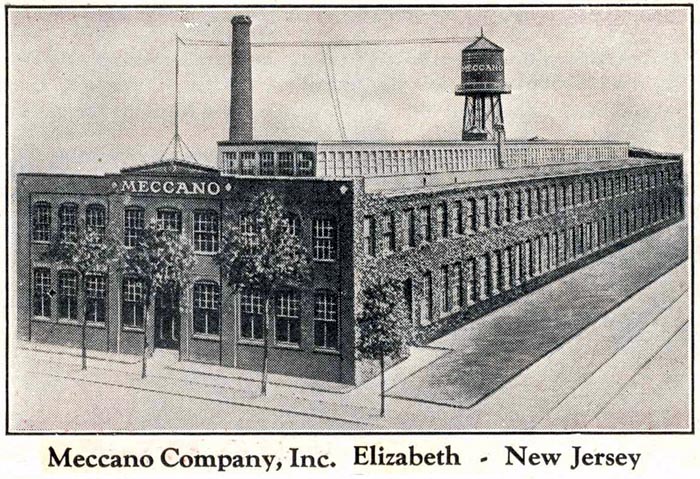
Meccano is a metal construction toy, using perforated metal shapes, nuts and bolts to assemble all sorts of things. Erector is a similar system which is much better known in the United States. Meccano was patented by Frank Hornby in England in 1901, and spread through the world. It was exported to the States by 1909 by the Embossing Company of Albany N.Y. until 1912, and a US Meccano Company was formed in 1913. Erector was invented in the US by Albert Carlton Gilbert in 1912. Legal procedings in America over Meccano patents are instigated by Frank Hornby in 1917, and litigation is won, resulting in injunctions of similar toys. A factory to manufacture Meccano sets was established in Elisabeth, New Jersey in 1920 and operated until 1928. There was also an office in New-York which closed the same year due to the Depression.
The US Meccano Company owned by Joshua Lionel Cowan (of Lionel trains) was acquired by A.C. Gilbert in 1928. They made products bearing the Meccano name for sale only in the United States. The Meccano factory was closed in 1928, and production moved to the Erector factory in New-Haven Connecticut. Meccano sets continued in production for a few years, and the name was used on a number of other toys. Meccano construction sets were made in the US as late as 1938. Gilbert was also selling toys in England. In 1929, Henry Hudson Dobson becomes the importer for the Meccano products in the U.S.A.
Gilbert retired in 1954 and turned the business over to his son A. C. Junior. The company was struggling as the space race was on and the company was slow to bring out new products. Upon his death in 1961, the company was bought by the Jack Wrather Group. Erector was still a major product in the toy line, but the parts were changed and the company went bankrupt in 1967.
From 1929 and until 1959, the distribution of the Meccano products is done by Henry Hudson Dobson Inc, P.O. Box 255, Kenilworth N.J. H.Hudson Dobson was British, trade director of Meccano Ltd., he had been sent to the U.S. to increase the sales.
In the April 1973 issue of the Meccano Magazine AVA international publishes that it has been apointed sole agent for all Meccano Ltd. products in the U.S.A. This contract last until Meccano was wound up in November 1979.
The Erector portion of the business was sold to Gabriel Industries. Gabriel continued to sell Erector sets under the Gilbert name until 1976 when the name Gilbert disappers and the trade mark becomes "Gabriel Erector" . In 1978 the Gabriel Company was taken over by the Columbia Broadcasting Corporation and the sets are sold as "Gabriel CBS Toys".
By 1982 the Gabriel Division name was no longer used and the name on the boxes was "CBS Toys" with the Ideal logo. In 1984 CBS sold the Ideal Company and Erector to GAF View-Master. Copyrights were held under the name View-Master Ideal Group Inc.
In 1989, Meccano s.a. of Calais France bought the rights to the Erector trademark in the United States and started selling Meccano-Erector sets in the american market, they still do in 2014.
Photo and part of the text by courtesy of usmeccano.com and Bruce Hansen.
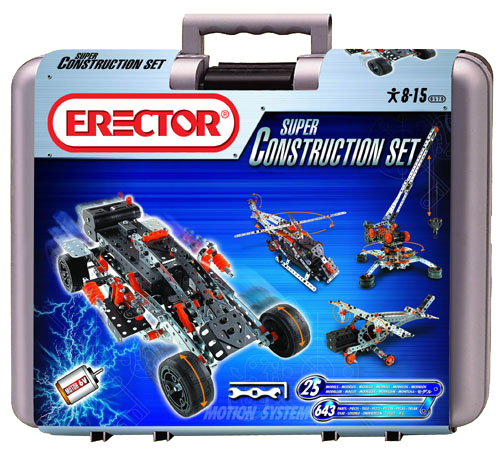
Erector set made in Calais by Meccano s.a.in 2010.
You are welcomed to send your comments, additions and corrections.
Jacques.
6118 Dinkinius
Jacques
Thank you for posting this account of the story of Meccano in the US.
By the way, the discussion you mentioned "elsewhere" was in the Binns Road closes the gates for the last time Thread, and it would be great if you could include a copy of the above in that Thread to complete the picture that I tried to, but failed dismally to complete!
Kind regards
Bruce (150)
#634
13 June 2015
6128 johnnyangel
As a new DTCA member (but Dinky collector for about 55 years) I am pleased with the quality of the discussion on this forum. I am however bound to say that the information above about U.S. distribution is incomplete and in some respects inaccurate. I hasten to add that Jacques can hardly be blamed for this as no one knows the whole story and few know even part of it.
Most collectors probably do not care about this issue in any case. (One of my fellow Californians who did and researched it in the past is Dinky collector/scholar Keith Harvie, whose "Dinky Toys Gazette" was sadly short-lived.) But Meccano Ltd.''s ever-variable distribution in the States had a big effect on those of us who lived through it. In my case, it made Dinky collecting a tantalizing, romantic quest -- and thus paradoxically added to the models'' appeal compared to their readily available competitors such as Corgi and Matchbox.
Fortunately, we Dinky collectors do not need to worry about the early history of Meccano building sets in the U.S., some of which remains confused by patent claims and counter-claims as well as the passage of time. But it needs to be said that before 1938, distribution of Dinky was not yet by H. Hudson Dobson, but rather by "The Meccano Company of America." Prewar boxes often bear "Meccano Company of America" stickers, with the same black-on-orange colours as their postwar Dobson equivalents.
In 1938, the distributor''s name changed to H. Hudson Dobson. The year is documented via a 1938 catalogue (I scanned this image from the "Dinky Toys Gazette") that was rubber-stamped with the Dobson name, with the headquarters being at the same address as before. (The company moved to New Jersey after the war.)

Jacques is correct to suggest that Mr. Dobson had been a Meccano employee. The reason for the name change is unknown to me; perhaps it represents Dobson''s taking an increased financial stake in the distributorship, or perhaps it was done to help the firm take on distribution of other companies'' toys. (After the war, H. Hudson Dobson did briefly distribute Frog models and SAE diecast figures.)
Elsewhere on this forum for those who have not already seen them) are copies of communications received from H. Hudson Dobson by several collectors in the 1950s. The similarity of the letterhead to Meccano''s own, and the "Meccano" cable address that was given for the New York office, suggests that H. Hudson Dobson was still part of Meccano Ltd. -- or at least very well integrated with its operations.
Whatever the case, the distributor did its utmost to contribute to the great postwar export push. As all readers will be aware, various prewar models were reissued especially for the U.S. market, others were recoloured for the U.S., and -- most important -- Dinky Toys were freely available in U.S. toy stores.
While Dinky never quite became the household name that it was in England, it dominated the market -- especially pre-Matchbox and pre-Corgi. Dinky Toys were advertised in national publications such as Life and Boys Life (the latter a magazine received by U.S. Boy Scouts). And I have attached a screen capture I made from the introduction to "Gumby," a popular children''s programme from the 1950s: this was not an early example of "product placement," but simply a reflection of what toy cars the producers readily found in a local shop.
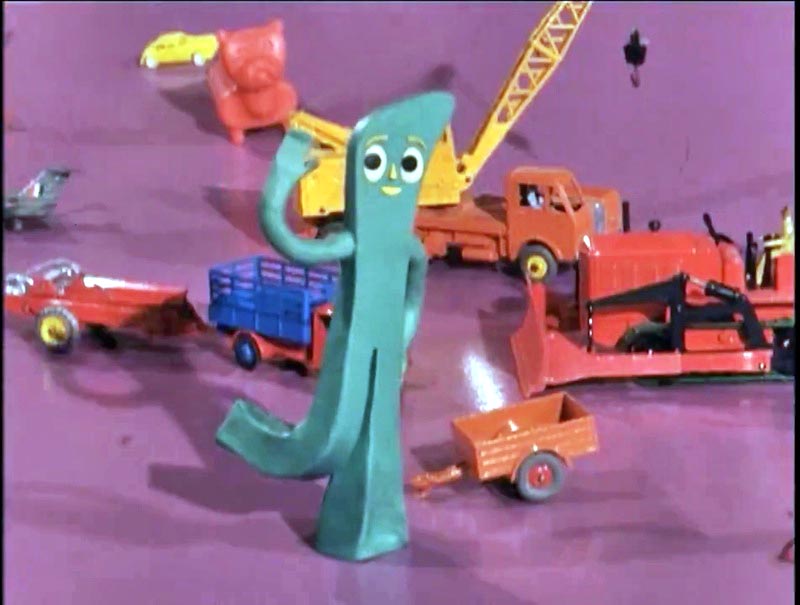
In 1959, however, things went wrong, with the closing down of H. Hudson Dobson. Why this happened I don''t know (readers?), but it likely relates at least in part to increasing financial problems at Meccano Ltd. itself, and consequent unwillingness to invest in the U.S. market so heavily.
After this point, Meccano provided Dinky Toys to a variety of different, regional distributors in the States. Some of these may have done an adequate job, but not so in all areas. I distinctly remember when, as an already committed Dinky collector at the age of five, I was told by my local toy shop in Northern California that they just could no longer get Dinky Toys.
It was during this bleak time that Dinky Toys were "closed out" by many shops, since they could no longer get supplies. (I had one birthday party where each guest received an unboxed Dinky -- these were the final stocks that one shop had sold my mother out of their display case.) And while Dinky Toys were never intended to be sold for less than list price, shops did slash prices to clear out their leftovers; this explains why collectors today find models from this period whose boxes are marked with dollar amounts lower than the official price.
Eventually, in 1963, Meccano Ltd. contracted with A.C. Gilbert to distribute Dinky Toys in the U.S. (Gilbert did not distribute Meccano, however, for obvious reasons.) Display cases bearing the Gilbert logo and Dinky name were created, and a pared-down range appeared primarily in department stores such as Sears, Roebuck, Inc. (from where a kindly uncle purchased a tractor-trailer McLean for me that year).
But, just like Meccano Ltd. itself, A.C. Gilbert was financially troubled, so the arrangement did not last long. After Lines Brothers purchased Meccano Ltd. in 1964, it took over U.S. distribution. Relics of this time include special four-page U.S. catalogue leaflets, new-style store displays, and the hated (by me, at least) "Visi-pac" boxes (first in gold and then in yellow).
Because of what appears to have been a reduced sales force, Lines Brothers no longer did a good job of selling models to independent toy and hobby shops, unlike H. Hudson Dobson. Instead, it preferred to deal mostly with large department stores such as Macy''s, Marshall Fields, J.C. Penney, and Frederick and Nelson. That may have been fine if you lived near one of these establishments, but even then frustration could ensue. (I grew up bicycling distance from a Macy''s at Stanford, Calif. that never had any Dinkies, whereas another Macy''s in San Mateo had them but was frustratingly out of reach 13 miles away.)
Meanwhile there was a parallel distribution effort for Mini-Dinky and the "big six" American cars produced in Hong Kong. Some shops had these models but no other Dinky Toys. (Of course, these products would presumably have come directly to the U.S. without ever passing through Liverpool.)
Dwindling availability and the Visi-pacs made the phrase "Lines Brothers" an epithet to me and my best friend, another avid Dinky enthusiast. Less and less effort was made to sell Dinky Toys in the U.S.A., and (as Keith Harvie has documented) the 1966 Dinky catalogue was the last to be printed in a specific U.S. edition until 1973.
During this period, Lines Brothers did succeed in selling six different Dinky Toys -- likely in quantities of 10,000 apiece -- to Post Cereals. Tantalizing an otherwise Dinky-starved public, the models were made available for $1.00 each, provided mothers could be persuaded to purchase two boxes of sugar-laden cereal. (This is how I obtained the Saab 96 I still have today.)
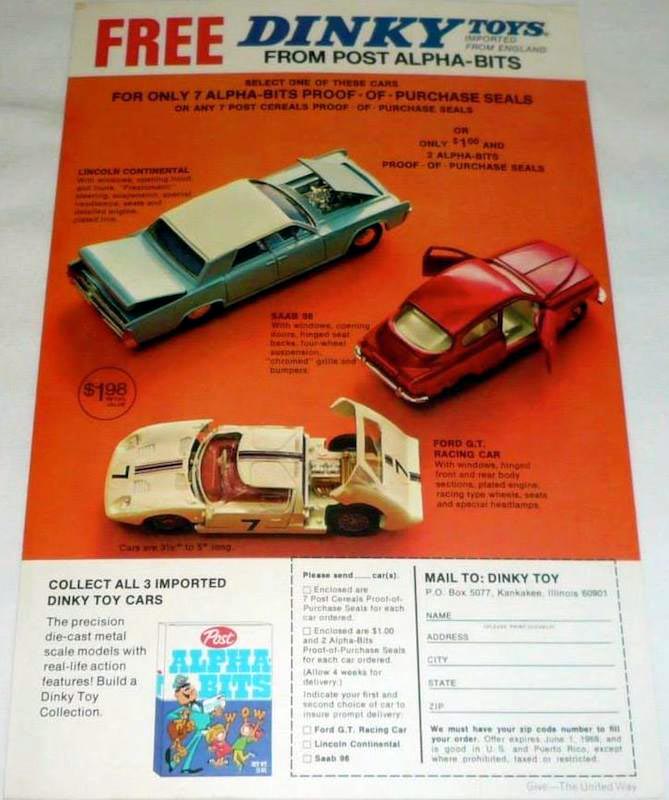
For us in Northern California during these horrible years, acquiring new Dinky Toys required a pilgrimage to the San Francisco branch of F.A.O. Schwarz (a chain that, I suspect, purchased the limited range it offered directly from Meccano Ltd.), a trip to Canada, or a visit to the U.K.
By 1971, when Lines Brothers collapsed, imports of Dinky Toys to the U.S. were at a level it would be charitable to call a "trickle." My friend and I were able to obtain new models only by post, through the good offices of George Grant ("Memorable Things"), a dealer in Maryland who obtained his stocks directly from Liverpool and Bobigny.
After the 1972 acquisition of Meccano Ltd. by Airfix, however, a Californian firm called Covell Management took the opportunity to begin importing both Meccano building sets and Dinky Toys to the U.S.A. once again. While big department stores no longer had toy sections, and the mass market was being catered to by chains such as Toys ''r'' Us, there remained "boutique" toy and hobby shops that wished to set themselves apart with distinctive product offerings.
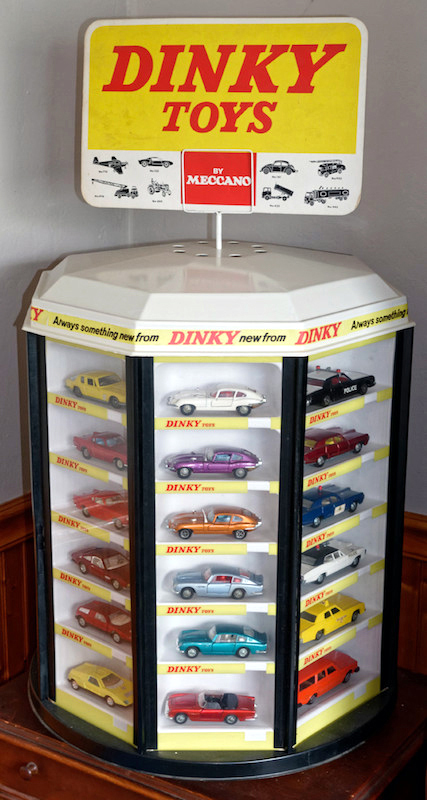
Covell sales representatives did a diligent job of finding such shops, providing their customers not only with models but with store displays like the one above, all imported from England. The business grew to the point that it attracted Texas-based AVA International, which bought out Covell and expanded its efforts still further. (Toward the end, AVA attracted investment from Airfix Ltd. and became known as US Airfix -- no connection to today''s Airfix USA.)
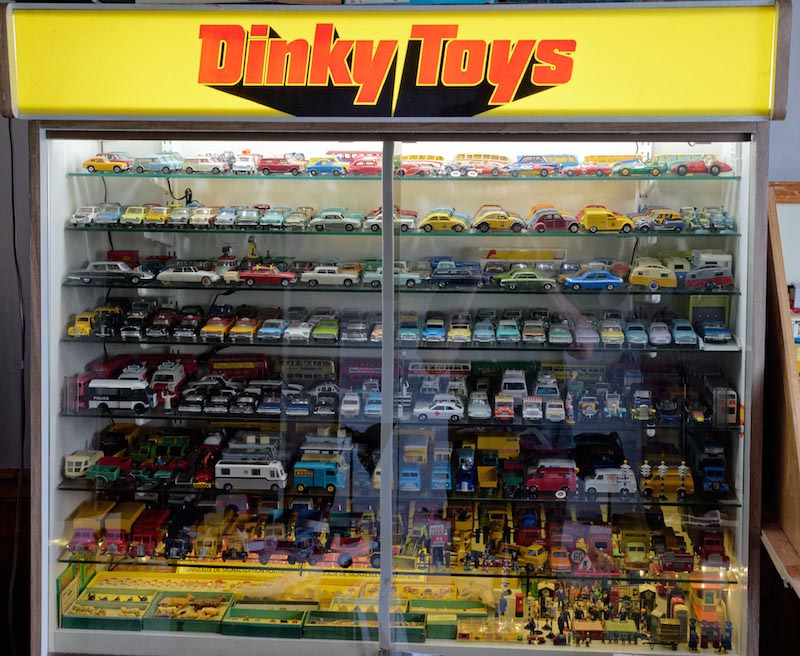
AVA supplied shops with massive display cases like the one pictured: Made of chipboard and requiring two people to move around, these were capable of showcasing the entire Dinky range and storing stocks in a locked compartment beneath. Regarding the latter, it''s worth noting that U.S. retailers considered the plinth-style Dinky boxes with lift-off lids to be a waste of space: When the #208 VW-Porsche 914 and #251 U.S. Police Car were reissued for the American market, they were pointedly equipped with standard card boxes.
Finally, readers will of course be aware of the "Made in U.S.A." Dinky Toys: the #275 Brinks Truck, the #803 Pocket USS Enterprise, and the #804 Pocket Klingon Cruiser. Raw castings of the Pocket models were shipped from Liverpool to Texas, and painted and packaged there. The Brinks Truck was also packaged in the U.S.A., but was probably painted and assembled at Binns Road (does anyone know for sure?).
In conclusion, the 1970s distribution of Dinky Toys in the U.S.A. was welcome, but only a pale echo of the marque''s 1950s heyday. Thus and sadly, if you find a Yank who has even heard of Dinky or had any of the toys as a child, he or she is likely to be over 60.
© 2015, Jonathan Angel, except for Post Alpha-Bits image, YouTube video, and Keith Harvie catalogue scan
6326 dinkycollect
Jonathan,
Thank you for posting the history of Dinky Toys in the states.
What I have been trying to write is the history of Meccano inc. but not of Dinky Toys. I would welcome your corrections to my text (either here or by email) so that there are no mor inaccuracies.
I should rearly merge your text and mine but I am too busy now.
Jacques.'
6328 dinkycollect
Jonathan,
I think that the answer is quite simple.
We can assume that when Henri H. Dobson started Meccano Inc. in 1929 he must have been at least 35 and was then born circa 1894. When his company closed down in 1959 his age was 65, the time to retire.
I have been four times to Elisabeth city on business in the 70''s, at the time I did not know that there had been a Meccano factory in that town Any way, the factory is not there any more, the area is now a housing estate.
Why the company was not sold is beyond my knowledge.
I wish you a good move and I am waiting to see a picture of that AVA cabinet in his new location.
Jacques.
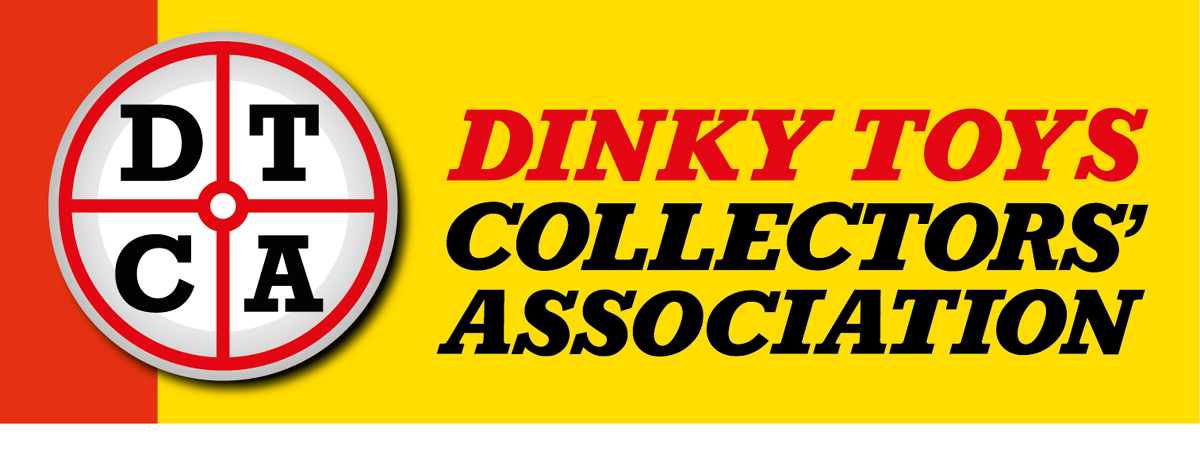

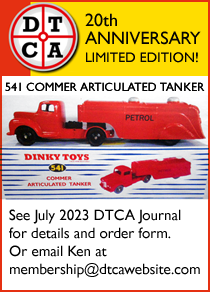
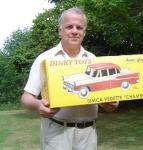

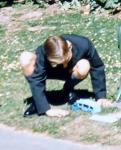
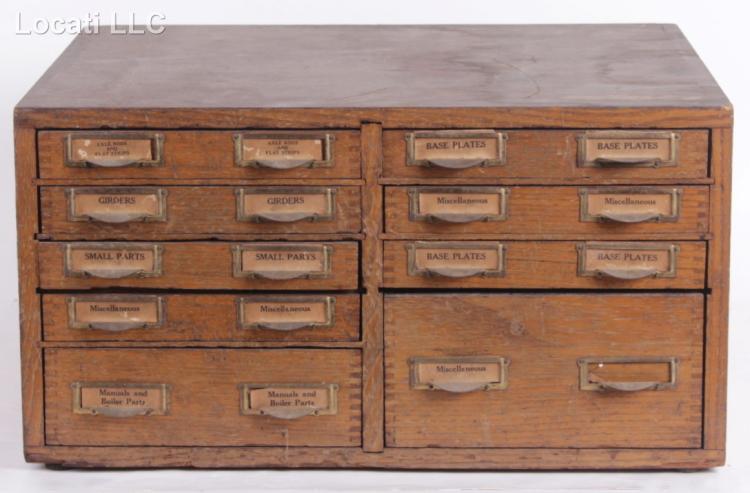
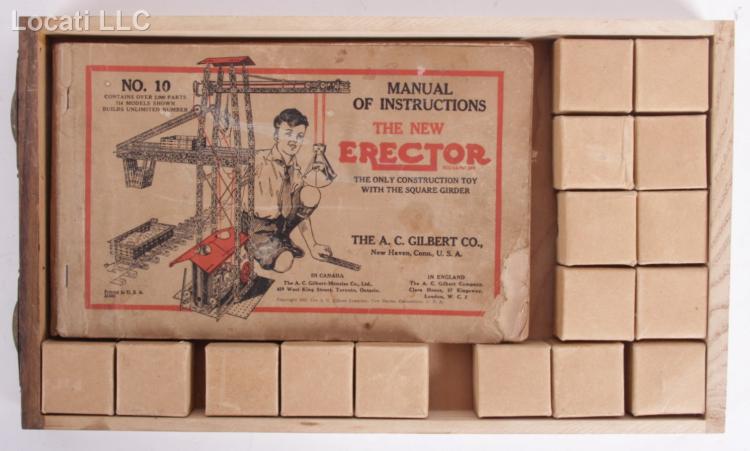
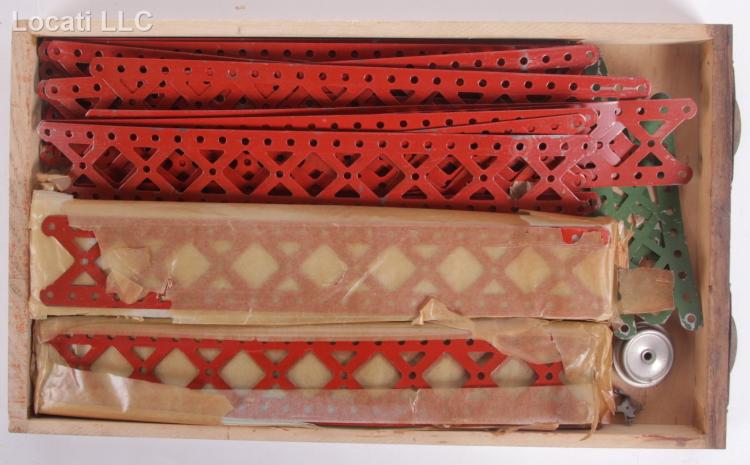

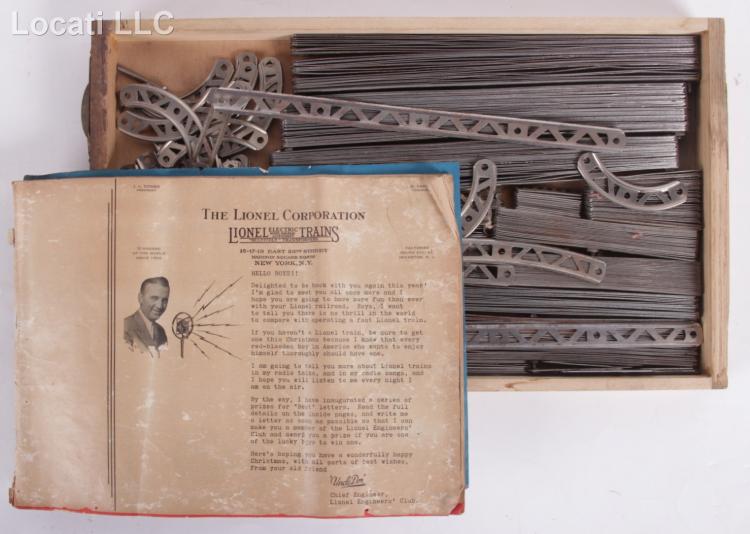
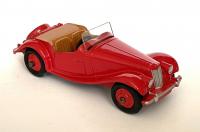
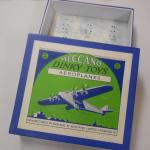
-105c and 383 4-Wheel Hand Truck (1949-1958)
-105c and 383 4-Wheel Hand Truck (1949-1958)
DTCAwebsite upgrade 2023
DTCAwebsite upgrade 2023
DTCAwebsite upgrade 2023
DTCAwebsite upgrade 2023
DTCAwebsite upgrade 2023
DTCAwebsite upgrade 2023
DTCAwebsite upgrade 2023
DTCAwebsite upgrade 2023
DTCAwebsite upgrade 2023
DTCAwebsite upgrade 2023
DTCAwebsite upgrade 2023
DTCAwebsite upgrade 2023
DTCAwebsite upgrade 2023
--22c Motor Truck (1933-50)
--22c Motor Truck (1933-50)
DTCAwebsite upgrade 2023
DTCAwebsite upgrade 2023
Trailer Caravans
Trailer Caravans
DTCAwebsite upgrade 2023
DTCAwebsite upgrade 2023
DTCAwebsite upgrade 2023
DTCAwebsite upgrade 2023
Trailer Caravans
Trailer Caravans
-138 Hillman Imp (1963-73)
-537 Renault 16 TL
-189 Triumph Herald Saloon (1959-64)
-255 Mersey Tunnel Police Van (1955-61)
DTCAwebsite upgrade 2023
-189 Triumph Herald Saloon (1959-64)
-189 Triumph Herald Saloon (1959-64)
-674 Austin Champ (1954-71)